One of the simplest indoor plants to grow is the snake plant, or “Sansevieria.” They may bring a sense of contemporary to any home and make for lovely tabletop decorations. However, if this is your first time purchasing a snake plant, you might be curious about how big do snake plants get and how quickly they grow. You will find the answers to these queries in this article, along with information on further aspects of their upkeep and care.
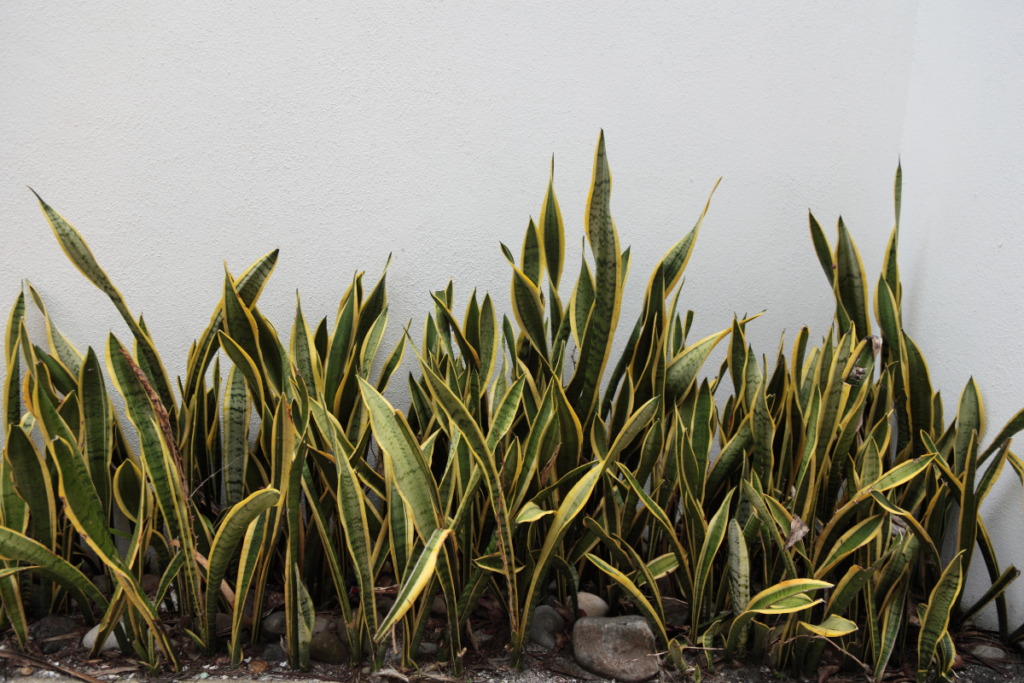
Snake plants are well known for growing more slowly than other types of plants. When cultivated inside, a snake plant can reach a height of 8 feet, and when planted outdoors, it can reach a height of 12 feet. Depending on its height, the width of the entire plant can range from 6 inches to 3 feet. These plants have an annual growth range of 10 to 24 inches.
Your indoor snake plant’s growth rate and size will be influenced by a few key growth parameters, such as soil quality, light exposure, and proper watering. The greatest method to guarantee your snake plant’s continuous growth is to properly care for and nurture it.
To find out how to care for your snake plant in the best manner possible, keep reading.
How Tall Does A Snake Plant Grow?
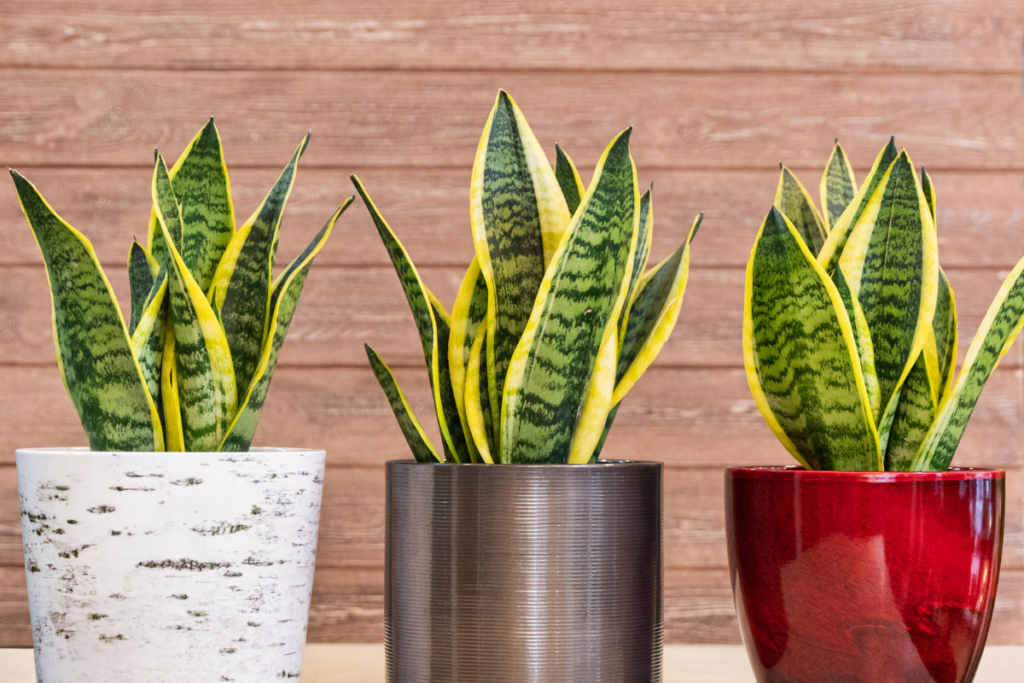
Varieties of snake plants can grow as tall as 3–4 feet at a rate of about 2 inches every year. The height of dwarf sansevieria variants ranges from 10 up to 12 inches. Some more expensive and rare Sansevieria cultivars can reach heights of 8 to 10 feet.
To determine the type of your snake plant, look at the table right below. There are a lot of different snake plant species and varieties, and the table does not show a complete list. We’ve restricted the list to some of the selected most common types now.
| Snake Plant Variety | Average Height |
| Sansevieria trifasciata ‘Hahnii’ (Bird’s Nest Sansevieria) | 12 inches |
| Sansevieria trifasciata Silver Hahnii (Silver Bird’s Nest) | 8-9 inches |
| Sansevieria trifasciata (Mother-in-Law’s Tongue) | 24-48 inches |
| Sansevieria trifasciata ‘Laurentii’ (Variegated Snake Plant) | 48 inches |
| Sansevieria Masoniana (Whale’s Fin) | 36-38 inches |
| Sansevieria ballyi (Dwarf Sansevieria) | 6-10 inches |
| Sansevieria cylindrica patula (Starfish Sansevieria, Boncel Snake Plant, Cylindrical Snake Plant) | 10 inches |
We hope that any of these descriptions of snake plants rings a bell, but if you still need to decide which kind you’re cultivating, don’t worry. We’ll discuss some increasing knowledge and guidelines that are generally applicable to the entire Sansevieria genus.
Read more about rare snake plant varieties.
RELATED: Snake Plant Problems: Common Sansevieria Problems and How To Fix Them
How Fast Is Snake Plant Growth Rate?
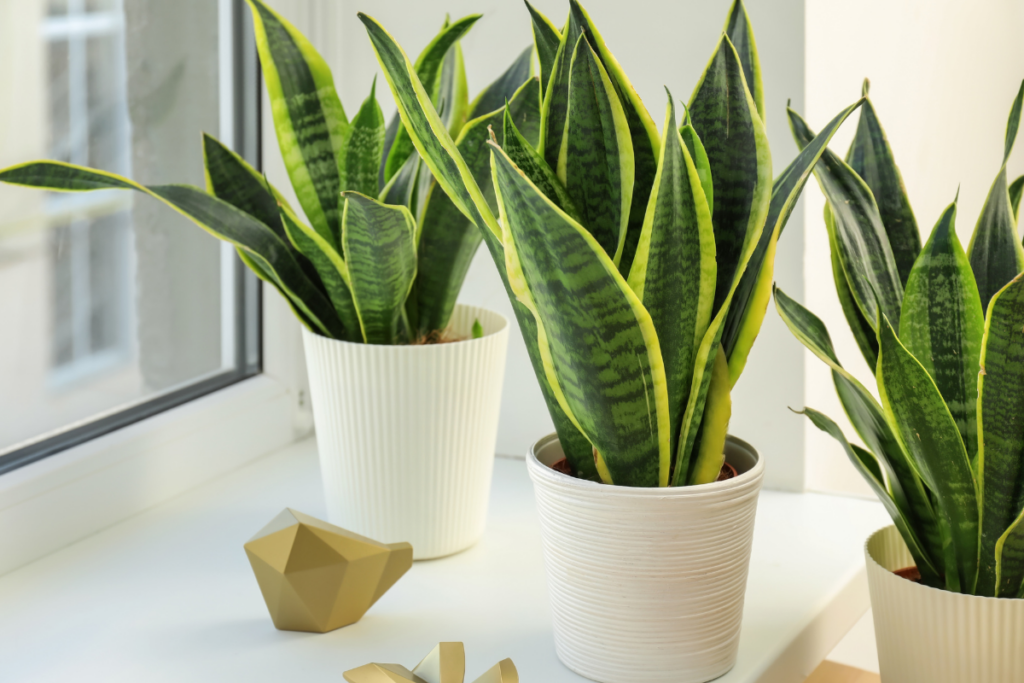
Snake plant is a slow growing plant, generally. Under ideal circumstances, the taller Sansevieria varieties (such as the Trifasciata and Masoniana types) can grow up to two inches every year.
Dwarf or smaller types (such as Hahnii, Baylii, and Starfish) will expand proportionately to their growth size at a similar rate. You might only notice a quarter of an inch increase per year in snake plant varieties of the dwarf form.
What Factors Affect Growth Rate Of Snake Plants?
The fact that Sansevieria can survive without a lot of sun is one of the reasons they are so well-liked. They are, therefore, perfect houseplants, especially for locations with limited sunlight.
In light of this, the sun is essential for maximizing growth. They flourish when exposed to indirect sunlight all day long. They should not be placed too close to windows that face west or south, as their leaves will burn. Instead, move them closer to the window so they can still enjoy the sun’s benefits without getting burned.
Aside from these, water, nutrients, and the soil all have an impact on growth. Visit our detailed guide on growing Sansevieria.
Additionally, your snake plant might require repotting every few years. Finally, its growth will be hampered if the container it is being cultivated in is too tiny. In fact, one method employed in bonsai trees to keep the trees tiny is to maintain the roots in a small container.
How Do You Make Snake Plants Grow Faster?
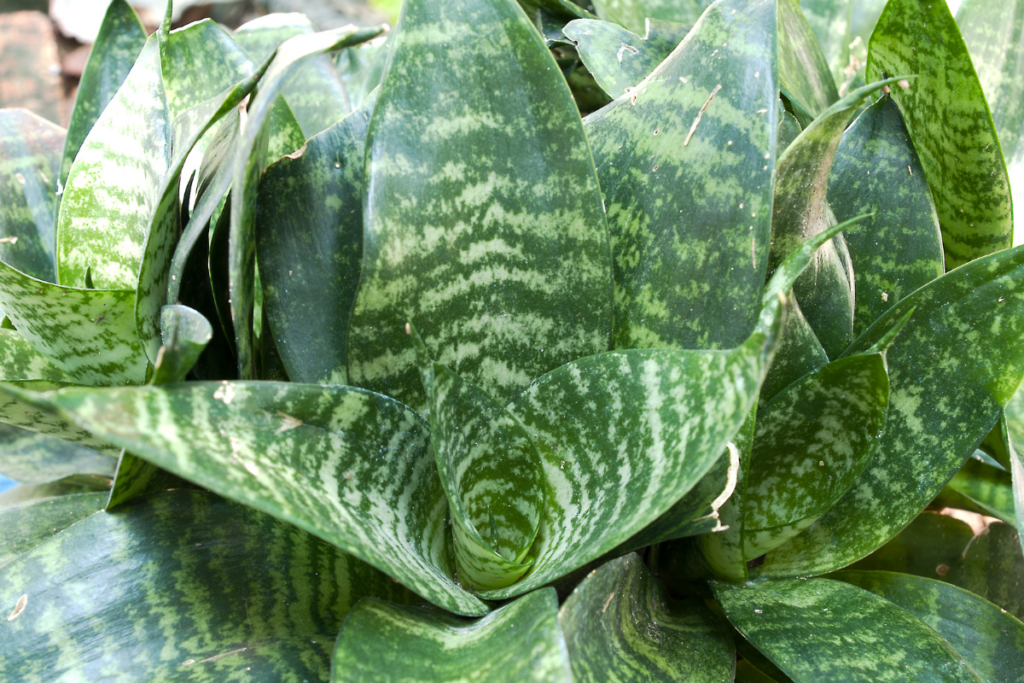
Although they move slowly, snake plants don’t need much encouragement to maintain their healthy growth. However, you can employ the following actions to assist in making your Snake Plants grow faster as they can:
1. Place It In A Sunny Location
Although snake plants may withstand shade, they will not grow as quickly or as tall as they could without some assistance from direct lighting conditions. This isn’t always a problem, though!
For example, your Sansevieria plant may be perfectly content in that shadowy corner of your hallway, and you may be completely satisfied with its current height.
2. Relocate It Outside During Summer Season
Snake plants, like other plants, thrive best in the open air. Therefore, your Sansevieria Plant will probably produce the finest development results whenever you position your plant in a bright spot on your balcony, porch, or garden during the summer due to the free sunshine and ambient outdoor moisture.
3. Bring It Inside During Winter Season
While it’s true that your gorgeous Snake plant will develop the most abundantly if relocated outdoors, however, you must still consider the season.
Snake Plants are indigenous to West Africa, wherein the wintertime average low temperature is only 64 degrees Fahrenheit. Therefore, your Snake plants can’t survive in temperatures below the 50 degrees mark for very long, and they’ll perish if they have much exposure to frost.
Your snake plant’s growth will be stifled by the cold. However, if you live in the USDA Zones 9–12, snake plants can stay outside all year.
4. Fertilize In Spring Season
You may start fertilizing your snake plant once a month, starting in the spring, around April. Through October, keep with this fertilizing practice. A moderately gentle cactus fertilizer might be used.
5. Stop Fertilizing In Winter Season
When the days begin to feel shorter, which is throughout the winter, stop giving fertilizers to your snake plant. Sansevieria plants are perennials that are evergreen, although in the winter season, they naturally go dormant like most of the other plants.
Giving your plants less fertilizer and seeing more growth may seem paradoxical, but feeding them plant food is relatively all about proper balance. So rest it, then get ready for springtime growth!
6. Water It Regularly
Water your Sansevieria plant once every 7 days during the spring and summer when it is actively developing. Reduce your watering routine to only once every month in the fall and winter. Your snake plant may concentrate on growing taller rather than on water conservation with dependable irrigation!
A common rule of thumb is that Sansevieria varieties need (or like!) less watering the smaller they are.
7. Repot Your Plant Every Three to Four Years
Allow your snake plant’s roots to completely fill the container. Although you might be tempted to give your plant the room it requires to develop into the towering Sansevieria Plant of your dreams right away, doing so might actually hinder its development. A snake plant with more root growth will grow taller, stronger, and healthier.
Read the more in-depth discussion of Snake Plant repotting.
8. Plant It In the Right Soil
Sansevieria Plants do best (and grow really tall!) in loamy, infertile soil. If ever you really want to dig into the weeds, Snake Plant growing soil should have a pH between pH 5.5 and pH 7.0.
9.Ensure That It Is in a Well-Draining Container/Pot
Terra cotta or unglazed pots are optimal for the growth of snake plants since they permit the roots to properly breathe and lessen the likelihood of root rotting. Make sure that the container or pot has enough drainage holes at the bottom.
RELATED: Snake Plant (Sansevieria): How To Get Your Plant To Flower and More
Does Height Equate To Better Health For Snake Plants?
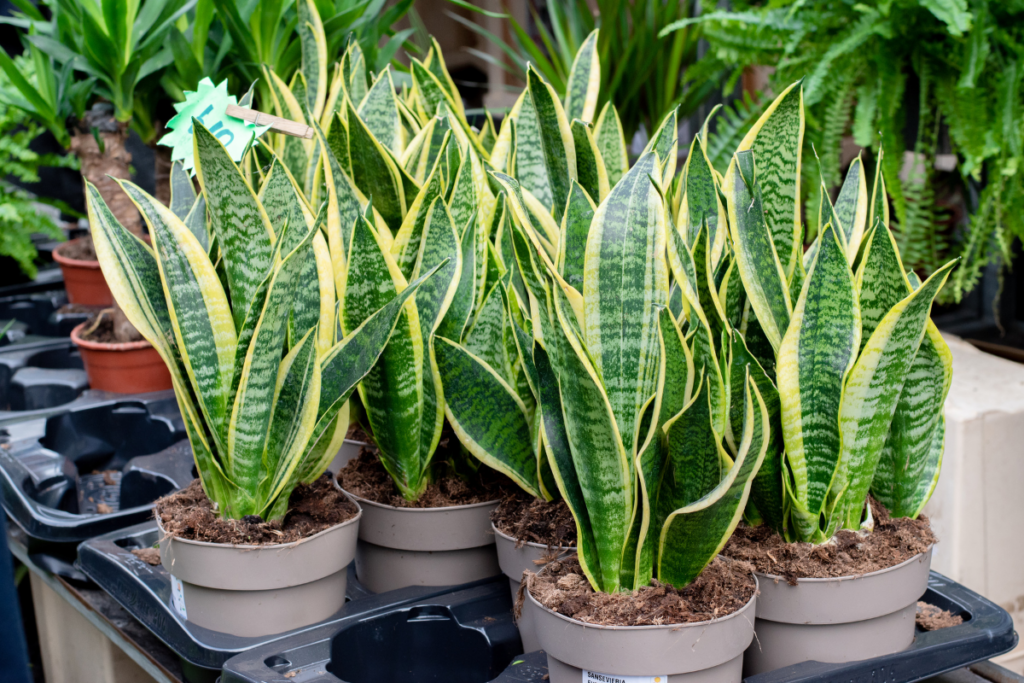
Avoid falling prey to envying snake plant size! Remember that bigger is not necessarily always better, and a snake plant’s height is simply one of its many characteristics. The uprightness and intensity of the snake plant’s leaves serve as better indicators of its health.
Firm leaves indicate proper watering and the absence of rotting or pests. A deep verdant green hue indicates that the Snake Plant is getting enough sunshine. Just like that!
Can I Grow A Taller Snake Plant In My Area If I Don’t Have Direct Sunlight?
Snake Plants, generally, are robust and quite adaptable to various changes in landscape, thus one that is already tall will probably do perfectly fine in a gloomy place!
But if you’re intending to raise a little or juvenile Snake Plant to taller heights without minimally giving it four up to six hours of direct sunshine each day, you’re into a more difficult (and maybe futile) task. This is because snake Plants need sunlight to grow vertically.
Your best option is to get a Snake Plant that has already reached its maximum, or is almost at its maximum height, if you already have your mind set on a high-reaching Snake Plant that is taller in a shaded area of your space.
Older, taller, and consequently more expensive Snake Plants have the added benefit of requiring less deliberate growing. Their growth has already reached an advanced stage. Now you may quietly appreciate their exquisite beauty and the benefits of air purification while keeping them pleasantly watered.
What To Do If Snake Plants Get Excessively Tall?
Our Snake Plants can occasionally get absolutely out of control. Perhaps you’ve downsized and need to rearrange your living quarters because you cannot fit a sizable Snake Plant anymore. You’re fortunate! It is simple to prune snake plants to make them shorter or wider.
You’ll need precise pruning shears, scissors, or even a knife to prune your snake plant. First, cut off the tallest Snake Plant leaves, and try to get as close to the plant base as you can, if you’re pruning to a lower height. Next, choose leaves from the plant’s outside border if you are pruning to lessen width.
By regularly pruning it, you may keep your lovely plant in its current pot and prevent it from growing much taller than you want.
What To Do With Snake Plant Cuttings?
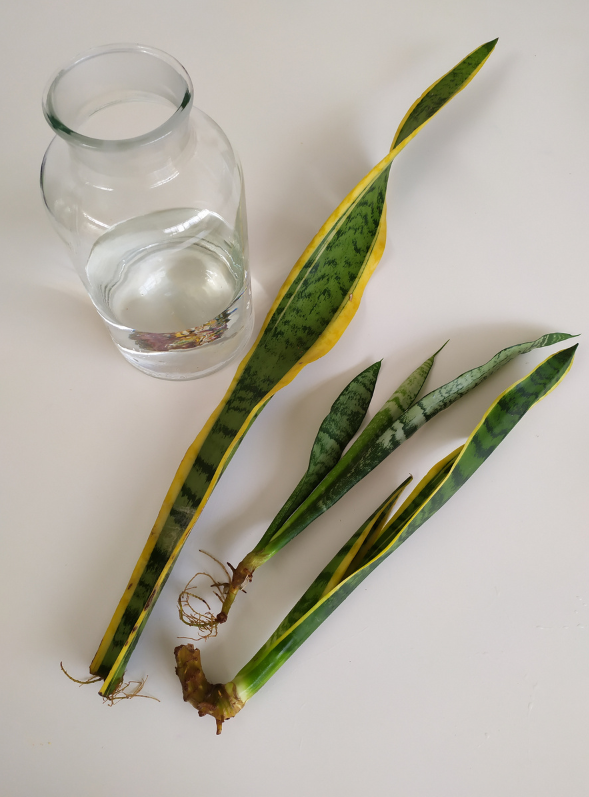
To develop new plants originating from stem cuttings or leaves of an existing plant is a process known as propagation, in case you didn’t know. Fortunately for Sansevieria plant enthusiasts, these gorgeous plants are among the simplest to grow!
A cutting should be placed “feet first” into some warm water. The water should be changed every week until the roots start to show. You’ve just produced a brand-new Sansevieria plant! The rooted plant cutting can now be planted in soil, and it can be added to your collection of houseplants.
A great technique to conserve resources while keeping your Sansevieria Plant at the desired height is through propagation. Additionally, propagated Mother-in-Law’s Plant pups make wonderful presents for birthdays, holidays, or possible as take-home items at special events!
For more detailed information, read the guide on propagating Snake Plants.
Snake Plant Optimal Care
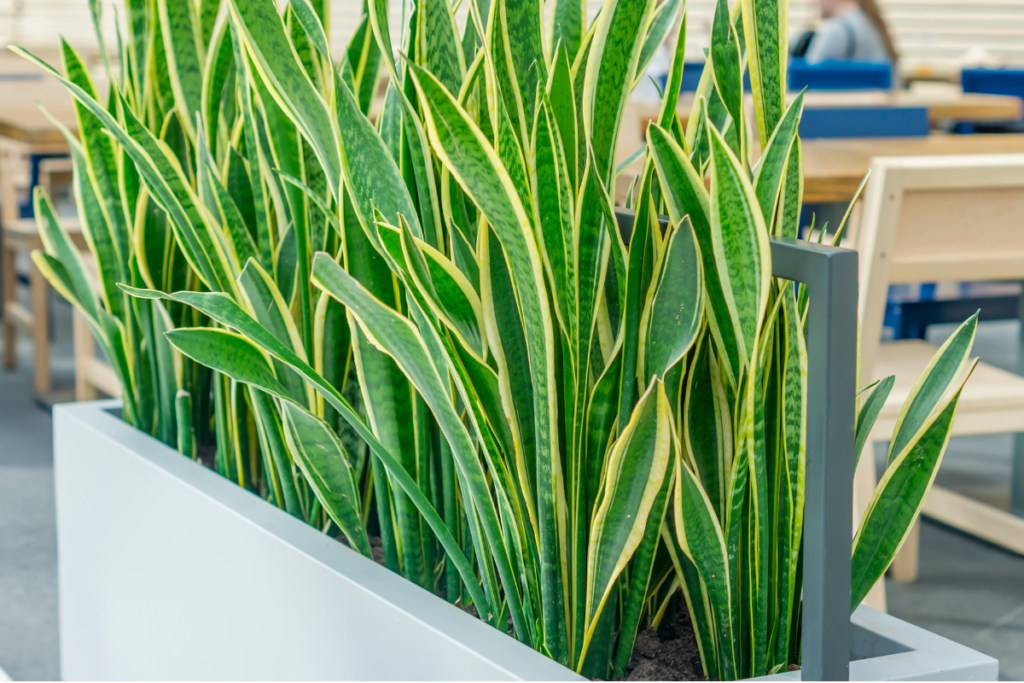
Temperature
Your Snake plants thrive in dry, hot climates. However, if you reside in a region with mild winters, like Florida or California, you can also put a potted snake plant outside or on a window sill.
As long as the general temperature does not drop below the 50 degrees Fahrenheit mark for a longer time, your backyard garden will also be a fantastic spot to cultivate a snake plant.
Light
Your Snake plants don’t particularly care what kind of lighting they have. They can thrive in practically any degree of lighting, high or low, however, it is best to place them out of prolonged exposure to direct sunshine.
Whenever they are planted in outside gardens or left to stay on window sills, in particular, doing so can cause their leaves to burn. If you place the plant close to a window, an eight to ten-foot distance from a house window that faces west or south would be best.
Fertilizer
Except when these plants are sick and need quick nutrient revitalization, these plants don’t require much fertilizer. Use 10-10-10 NPK (Nitrogen, Phosphorous, Potassium) ratio cactus fertilizer or any type of succulent fertilizer for your Sansevieria plant.
You should never fertilize your lovely snake plant in the winter; instead, do it during the spring or summer season. Not more than twice every year of fertilization should be sufficient.
Soil
Snake plants’ ideal growing medium is potting soil that drains properly. Additionally, you can use commercial indoor growing mix for succulents or all-purpose cactus soil.
For your Sansevieria plant, the ideal soil mixture is those which can be easily rehydrated with only one watering and drains rapidly. In addition, the loose soil’s additional air spaces will prevent the Sansevieria from needing too much water.
Watering
The single most crucial element in ensuring the survival and general health of your snake plant is proper watering. Unfortunately, when they initially acquire these plants, new snake plant owners frequently overwater them, which is their main problem.
Snake plants love to let themselves dry out in between watering sessions. In other words, it’s totally fine if you stick your fingers in the dirt a few days after watering the plant, and it feels a little crumbly. These plants can survive without water for days or even weeks!
In order for your snake plant to survive, you normally won’t need to water it more frequently than twice or three times every month. However, to keep the plant’s roots from rotting, the soil needs to become a little bit dryer before the following watering.
Because they require little water, snake plants are more prone to root rot. If your plant does get root rot, you’ll be able to tell because the leaves may begin to turn yellow and possibly bend somewhat, as opposed to before when they stood rigid as a board.
Pests
Snake plants are generally more pest-resistant than other indoor plants. However, they can grow vulnerable to mealybug and spider mite infestation if kept in subpar conditions or planted outside.
Infestations of spider mites are simple to identify since the plant’s leaves will start to develop white patches and webs.
If you don’t treat your snake plant for mealybugs, they will eventually eat away at the foliage, causing it to wilt and die. You can use a variety of pesticides or neem oil to get rid of bugs on your snake plant. Rubbish alcohol can also be used to get rid of the bugs on the plants.
Repotting
Since snake plants grow slowly, as was already noted, repotting snake plants is not as frequent as other indoor plants. Your snake plant may only require repotting every 4 to 10 years on average. Every two to six years, depending on how much bright light your snake plant receives (which speeds up its growth), you may need to repot it.
The spring, just before the snake plant begins its new growth cycle, is the ideal time to repot it. Additionally, anytime you repot your snake plant, you must add new soil.
RELATED: 21 Types of Sansevieria – Indestructible, Exotic, and Elegant Air Purifiers
Frequently Asked Questions
Why Is Your Snake Plant Small?
Don’t worry if your snake plant is small. Plants known as snake plants are known for their slow growth. You will notice increased growth during the spring and summer months, which are when they are at their most productive. Your snake plant’s development is primarily influenced by direct sunshine and repotting.
The only other thing you can do for your plant is to wait for it to grow while making sure it receives enough sunlight each day and repotting it as necessary. It will arrive.
Do Snake Plants Produce Pups?
Yes, it is possible to grow snake plant cuttings to propagate the plant. The young plants at the base of the snake plant, known as offsets, are the simplest way to accomplish this. Cut off these new snake plants and plant them in the ground to produce more snake plants from the parent plant.
How Can You Promote Growth in Your Snake Plant?
Repotting your snake plant as it gets bigger and providing it with plenty of everyday direct sunshine are the two best ways to promote its growth. Unfortunately, indoor-grown snake plants will develop a little more slowly than those cultivated outdoors.
Therefore, it is best if your plant gets more sunlight. If you repot your snake plant as soon as the roots start to cram the pot, the roots will keep growing. The plant will get bigger as its roots get bigger.
What Size of Pots Do Snake Plants Prefer?
Snake plants prefer any pot size that allows for snug-fitting roots. Therefore, a little pot would be best if the plant is small, as long as it is 1/3 larger than the root ball of your plant.
However, if you want to grow the plant, you will need to enlarge the container by a few inches as the roots spread out.
Do Snake Plants Thrive In Crowded Spaces?
Snake plants can survive without packed root system, although they prefer it. They might not, however, reach the same height as plants with a more crowded root structure.
Following the spring and summer growing seasons, the roots of the snake plant will often become packed in the winter.
Final Thoughts
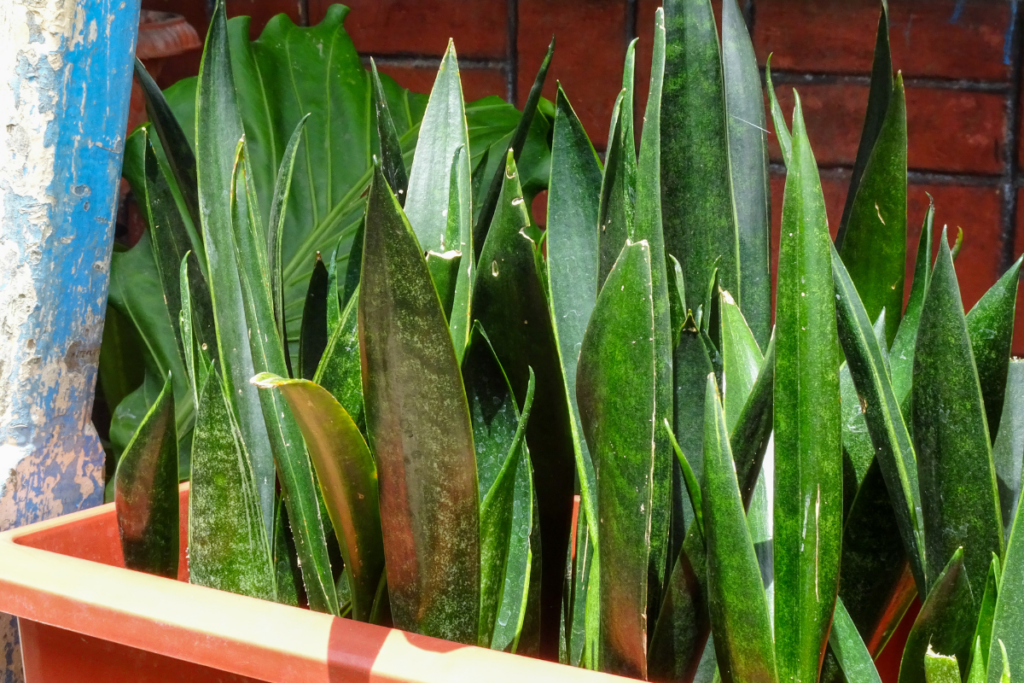
One of the simplest indoor house plants to care for is the snake plant. The most crucial thing to keep in mind when taking care of a snake plant is that it can go for an extended period of time without water.
Therefore, make sure not to overwater your snake plant, as this might cause stress and other problems for the plant.
Sometimes, neglect is beneficial to snake plants. So this plant might be ideal for you if you’re new to owning indoor plants or have a busy lifestyle.
With the knowledge provided above at your disposal, we hope you are more equipped to support your snake plant’s lovely growth in your environment, regardless of how bright or dark it is and how tall you want it to grow.
Editor’s Recommendations
Watering Snake Plants: How Often To Water and More Helpful Tips
Yellowing Snake Plants: How To Treat Them and More Information
Potting Snake Plants: The Best Pots For Growing Your Sansevierias







